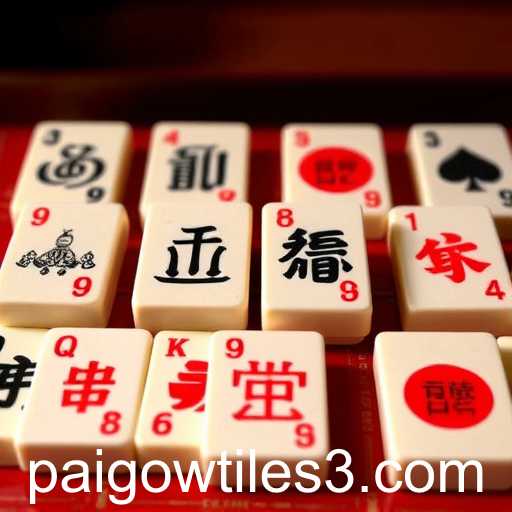Explore the captivating world of Pai Gow Tiles, a game rich in history and strategy, blending ancient Chinese traditions with casino excitement.
Pai Gow Tiles: Dive into the Intricacies of a Classic Casino Game
Pai Gow Tiles is a fascinating and complex game that captures the essence of ancient Chinese culture and blends it with modern gaming elements. Most players might have heard of Pai Gow Poker, but Pai Gow Tiles offers a distinct challenge that evokes both skill and tradition. This game is played with a set of 32 Chinese dominoes and is typically found in casinos with a strong Asian gambling culture. Understanding this game requires delving into its history, rules, and strategies.
The Origins of Pai Gow Tiles
Pai Gow can be traced back over 1,000 years in China, with "Pai Gow" translating to "make nine" in English. Initially played for fun and camaraderie within Chinese communities, it has evolved into a casino game attracting enthusiasts worldwide. The game utilizes a set of tiles, each featuring a specific combination of dots that resemble modern dominoes.
Gameplay Basics
Pai Gow Tiles is played between a banker and up to seven players, though typically each table hosts two to six players. The fundamental objective is to create two hands from four tiles: a 'high' hand and a 'low' hand. Players aim for each hand to individually rank higher than the banker's opposing hands. Ties go to the banker, making this a challenging game where the strategy is essential.
Each player receives four tiles, which they must split into two hands: a high hand with two tiles and a low hand with the remaining two. The high hand must rank higher than the low hand, based on the specific tile ranking system established over centuries. Tile ranks can be challenging to newcomers but mastering them can lead to successful outcomes.
Tile Ranking System
Pai Gow Tiles ranking is steeped in tradition and is not immediately apparent to those unfamiliar with its intricacies. The highest-ranking hand is considered the 'Supreme Pair,' followed by pairs, and further down to Gong and Wong hands, which are specific combinations that yield scores of eight or nine, respectively.
A unique element of Pai Gow Tiles is the secret language of the tiles. In some Western adaptations, the tiles' nicknames (like Day and Teen or Sword and Rooster) help players remember combinations leading to successful plays.
Strategic Play in Pai Gow Tiles
Unlike some casino games that rely purely on chance, Pai Gow Tiles requires players to engage in strategic decision-making. Understanding the rank of tiles and judging how to split a winning hand from a losing position is crucial. Expert players often study the possible combinations extensively, allowing them to anticipate the banker’s potential hands and adjust their strategy accordingly.
Cultural Significance and Variation
Pai Gow Tiles bears significant cultural relevance; playing it can offer insight into centuries-old Chinese traditions. It has also amassed numerous regional variations, with specific house rules or sets being preferred in distinct locales.
In summary, Pai Gow Tiles is more than just a game of chance: it’s an art form steeped in tradition. Whether you're a novice or a seasoned player, the allure of Pai Gow lies in the balance of skill, luck, and cultural understanding.




